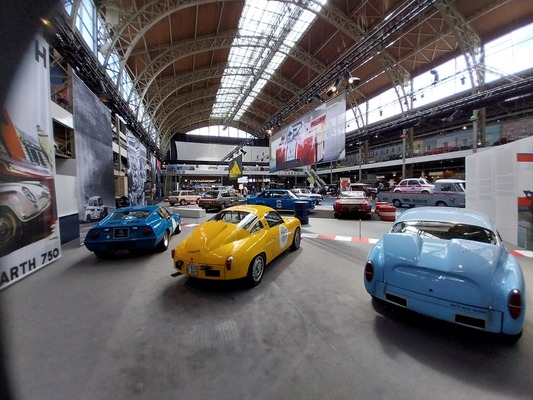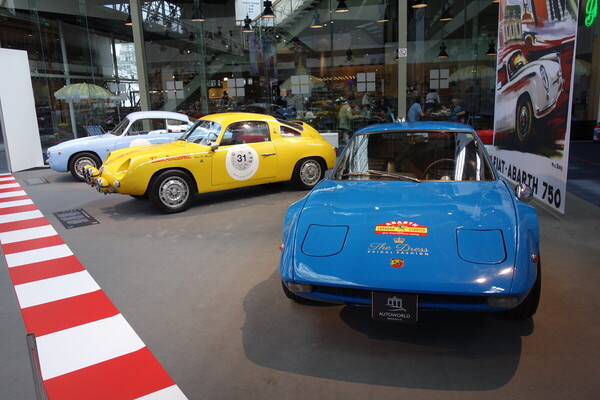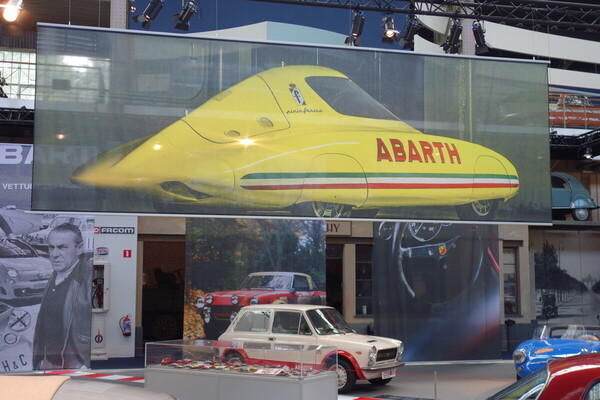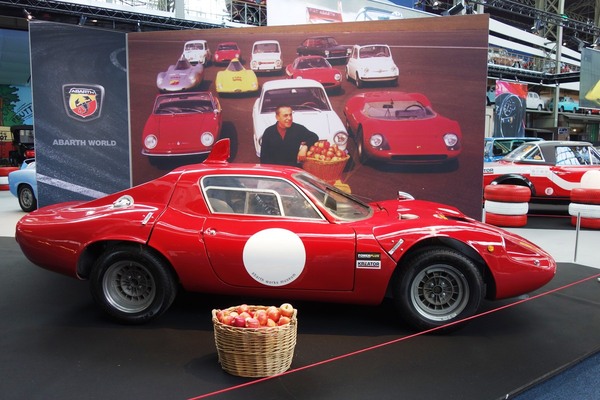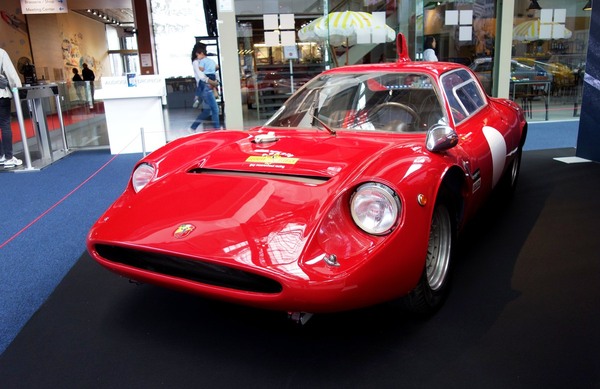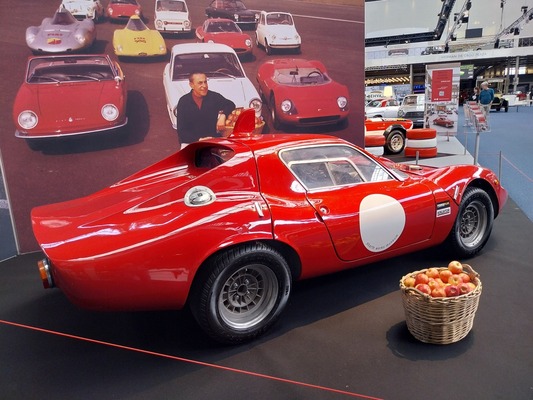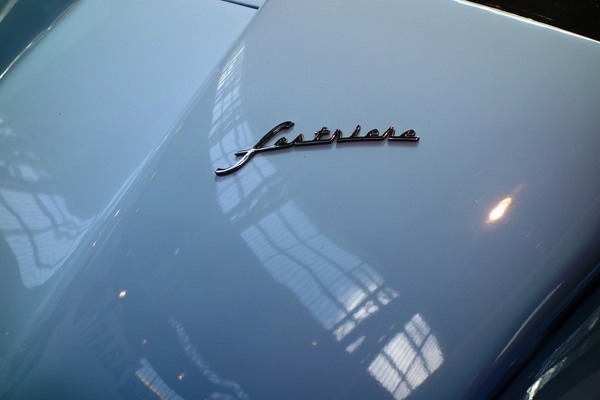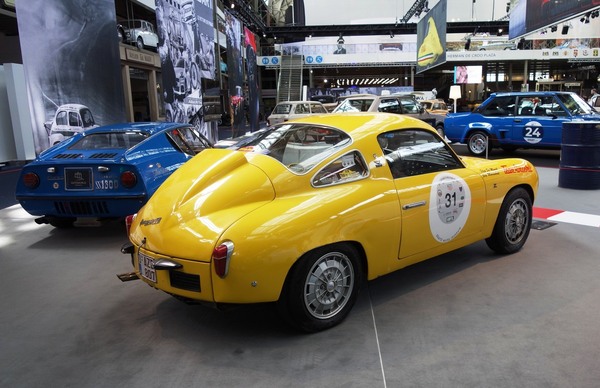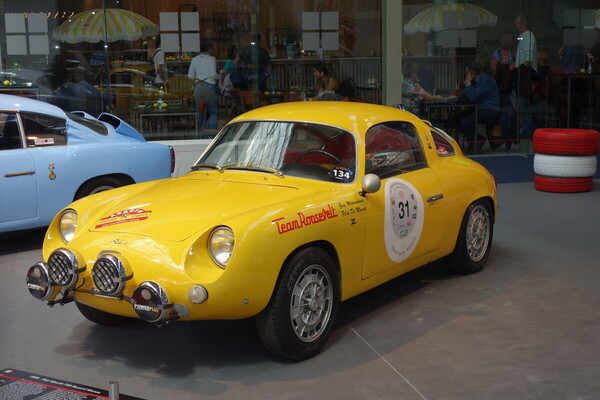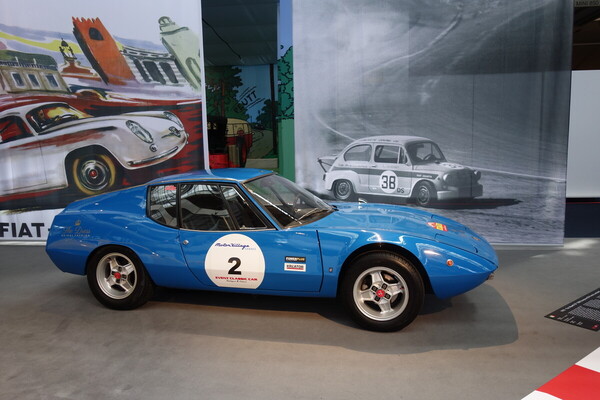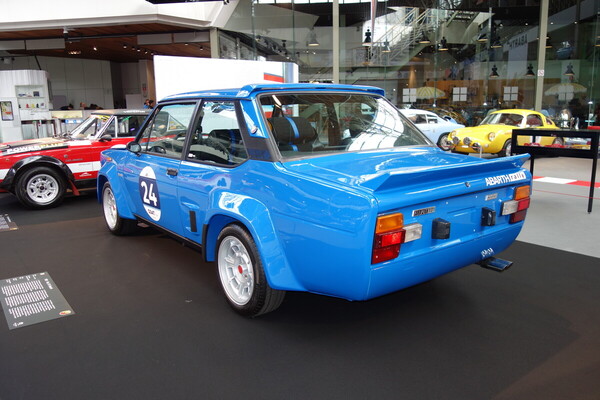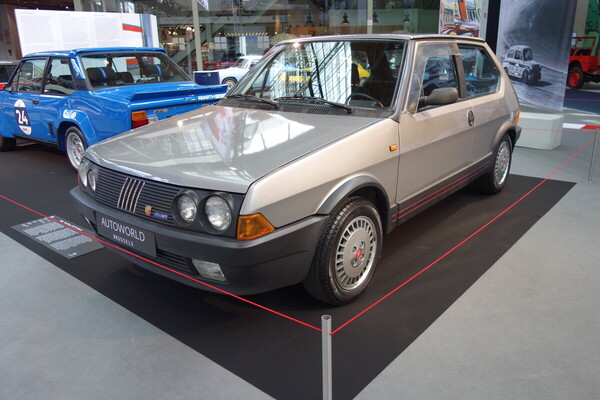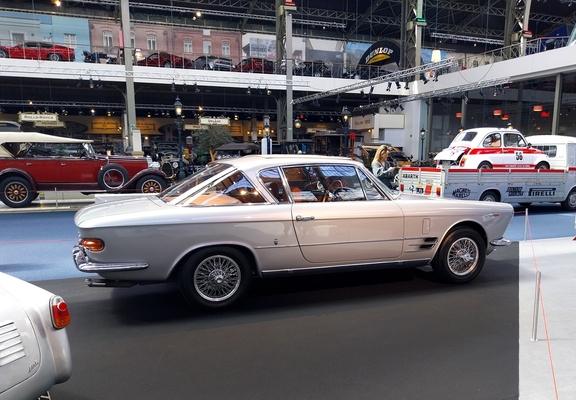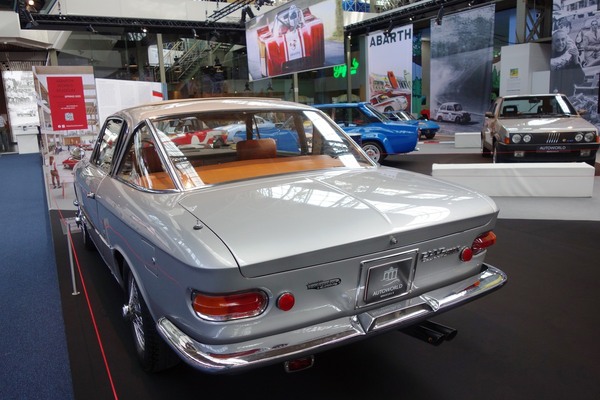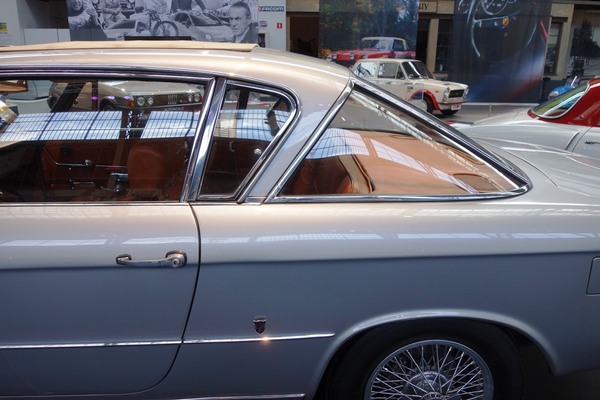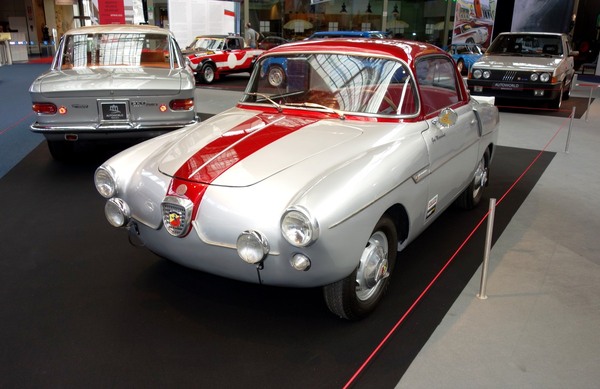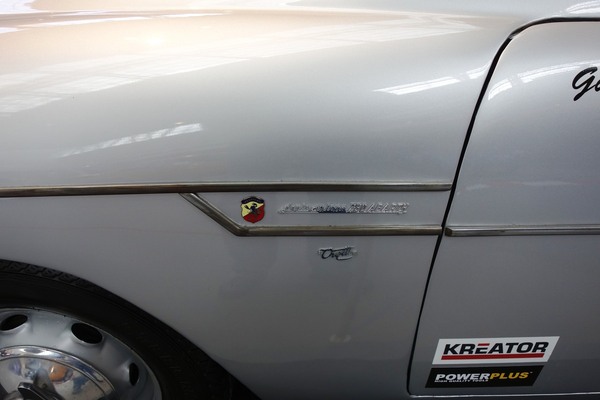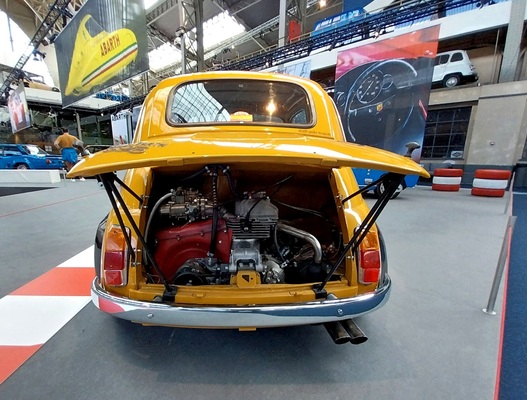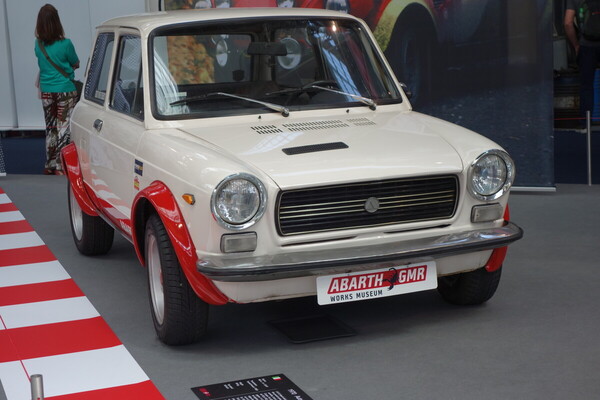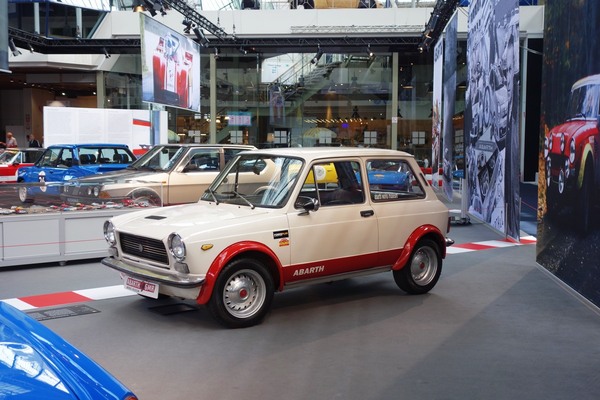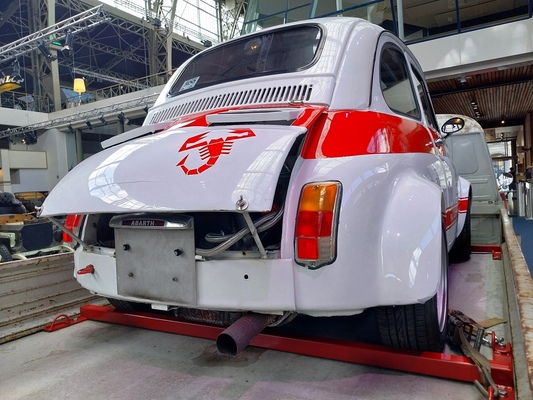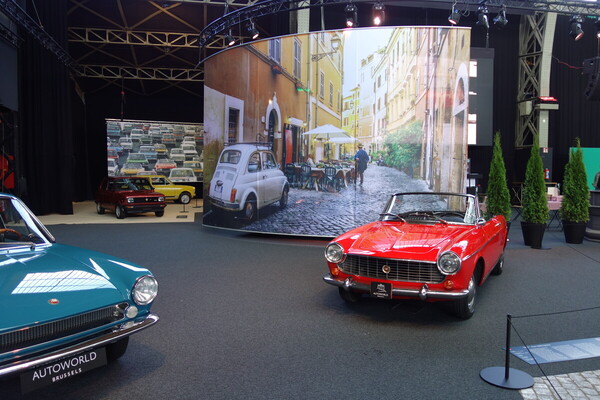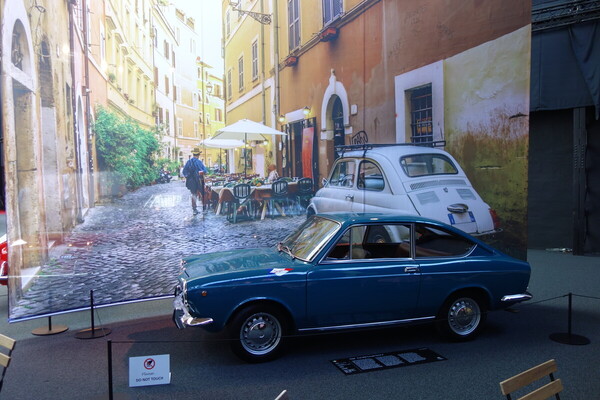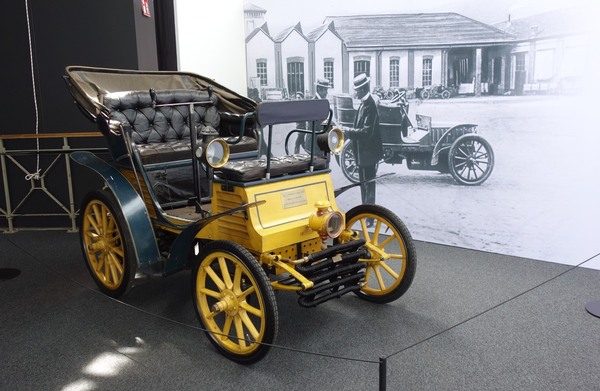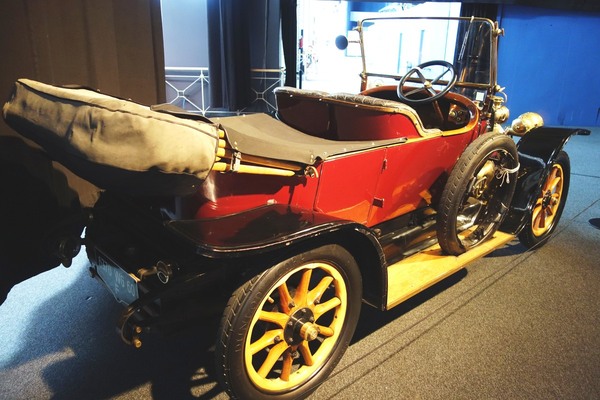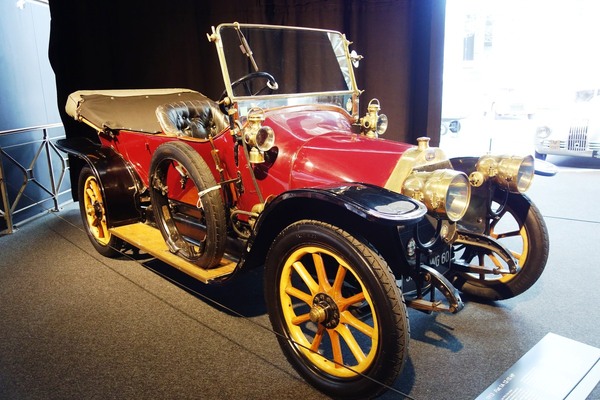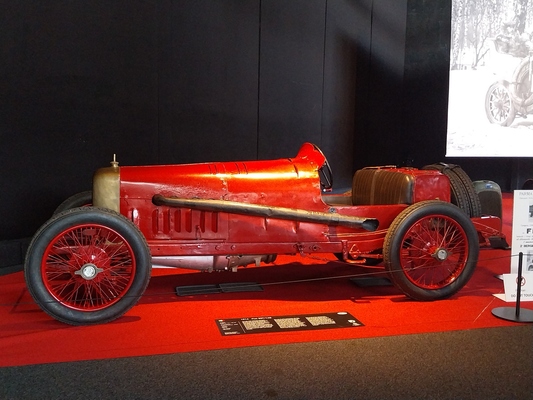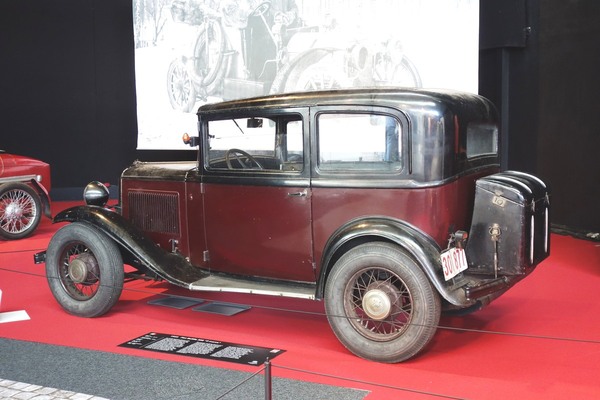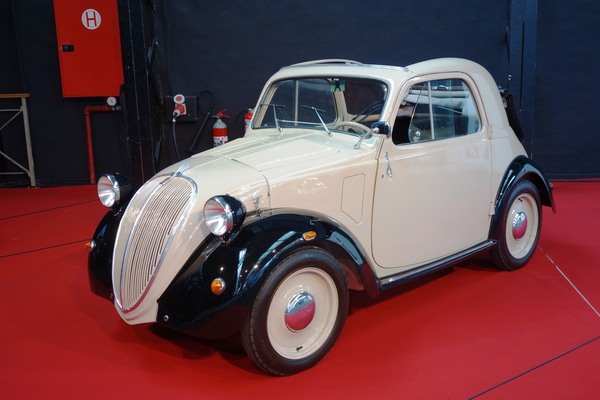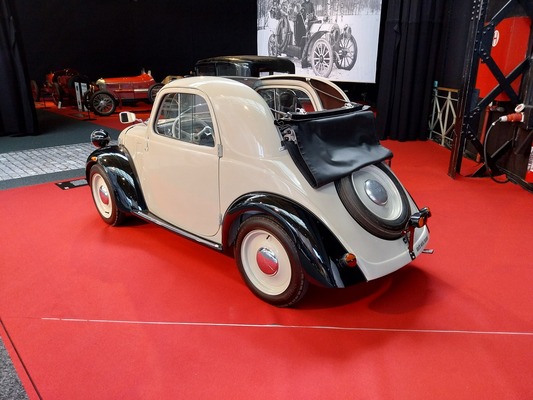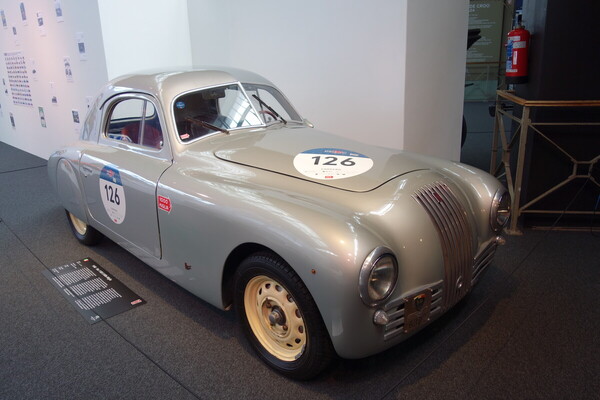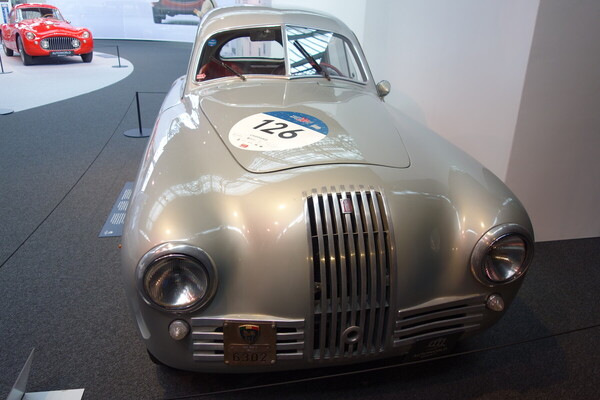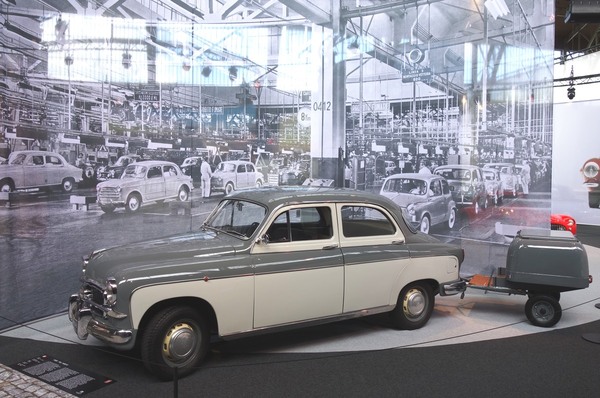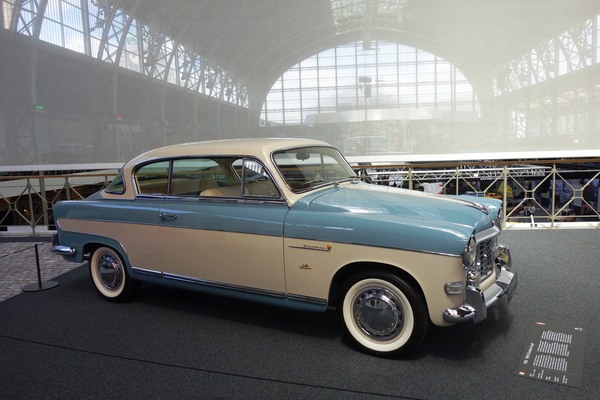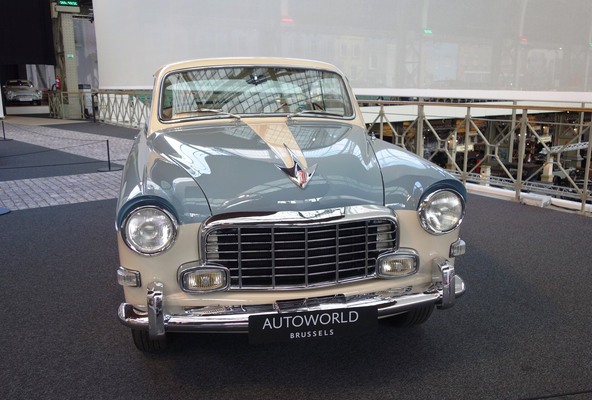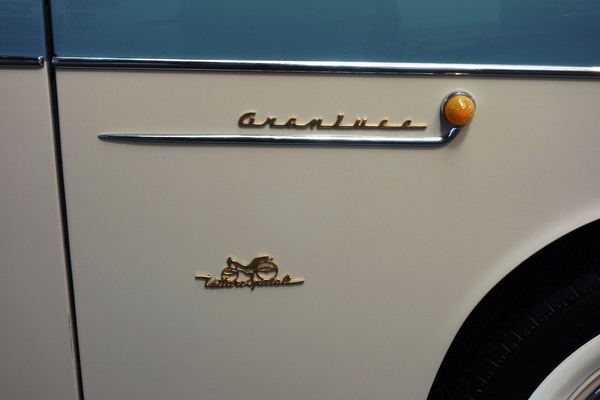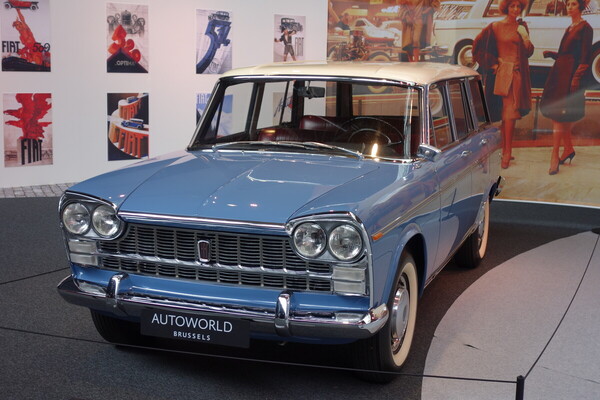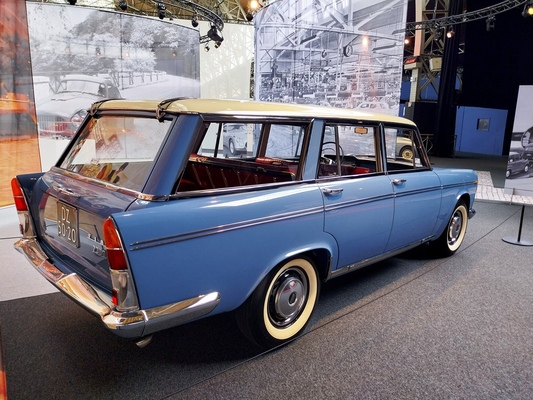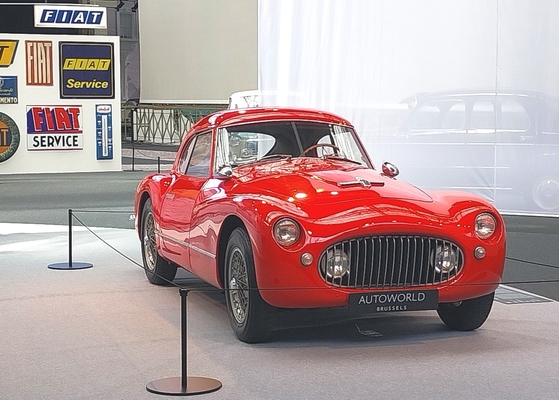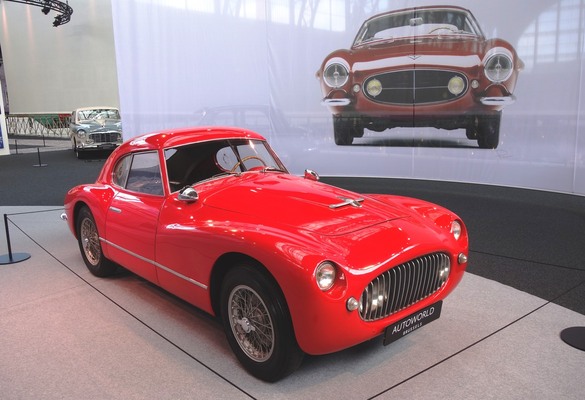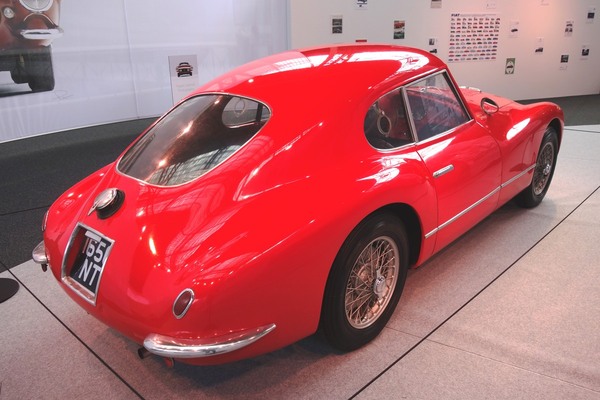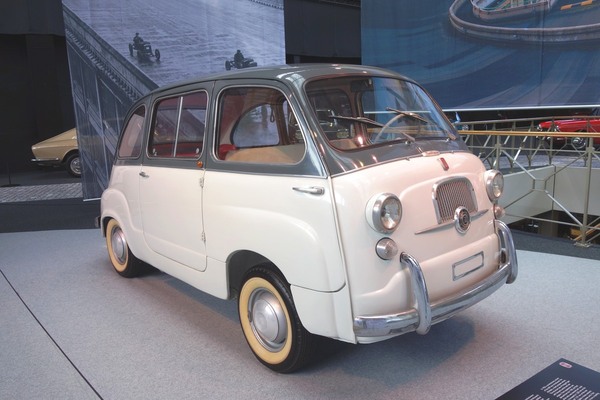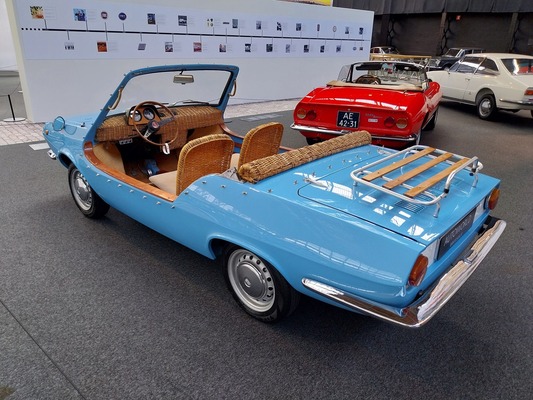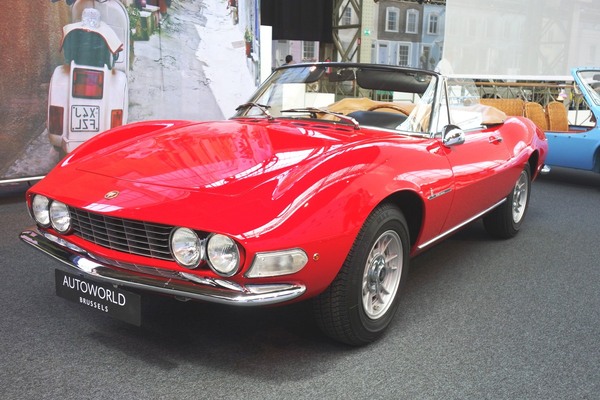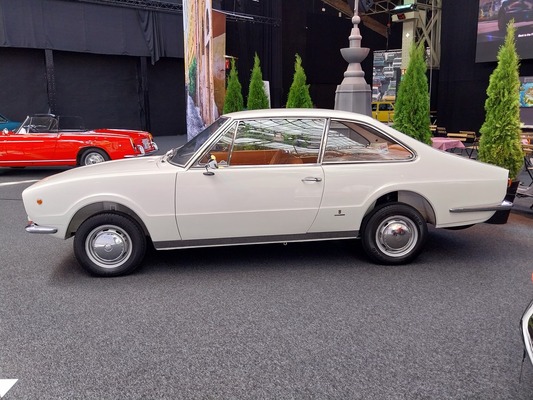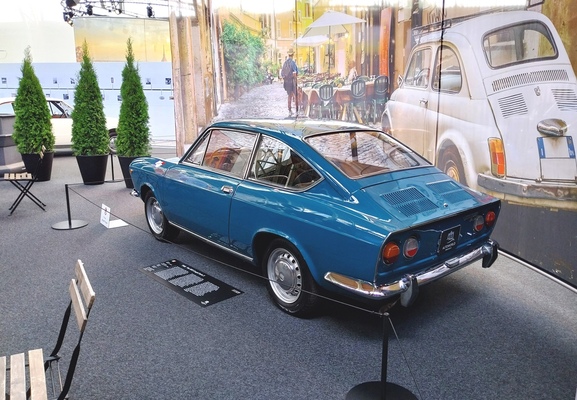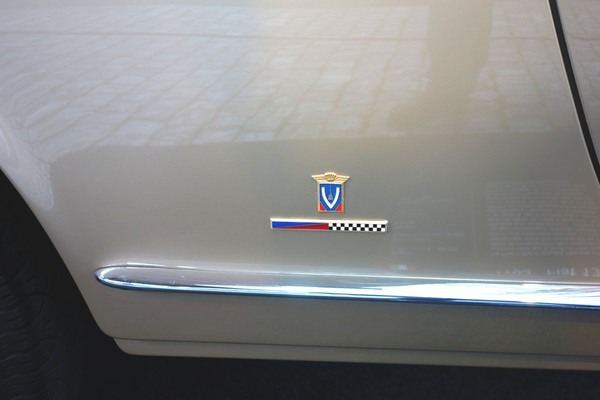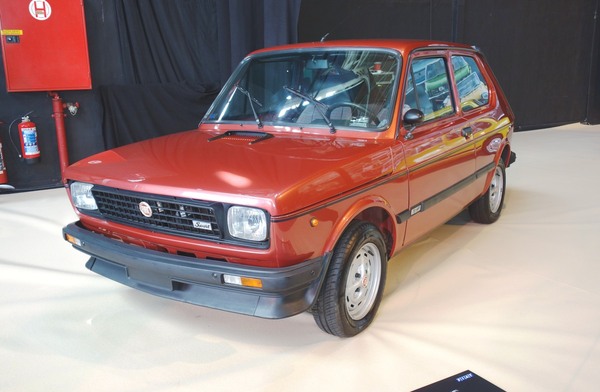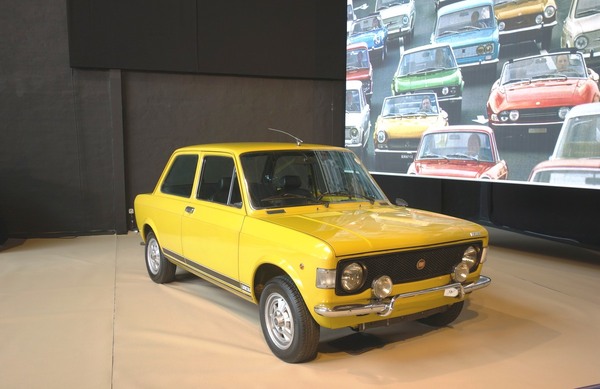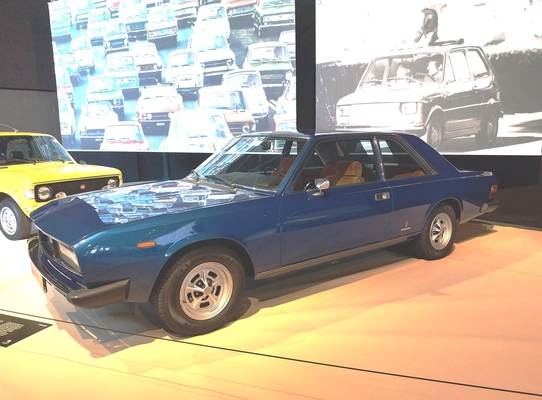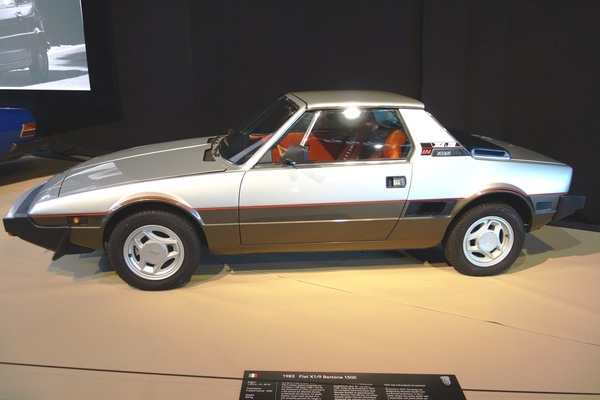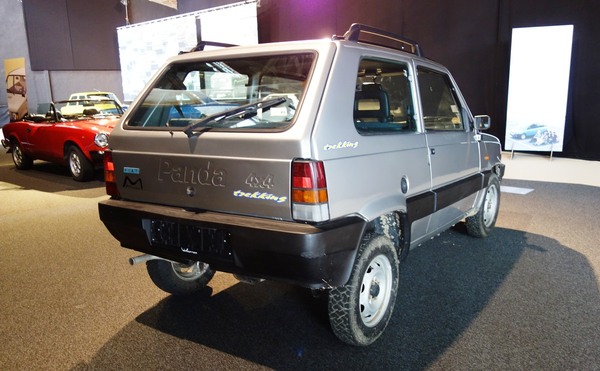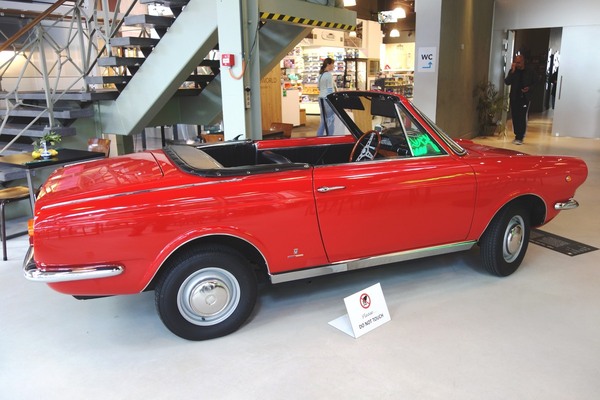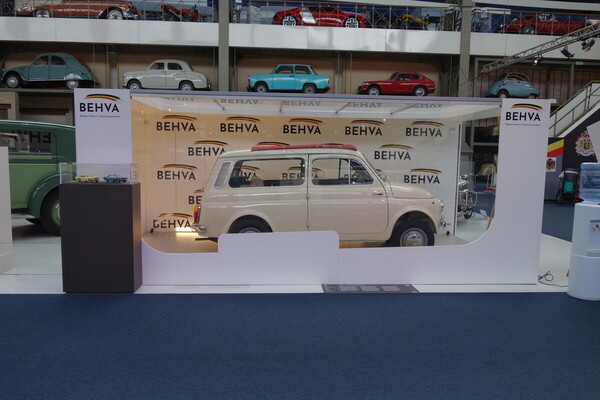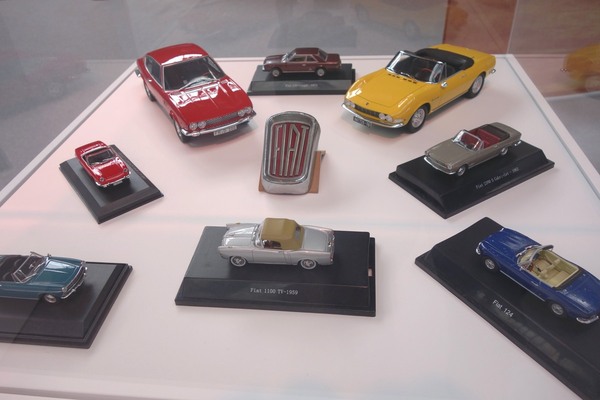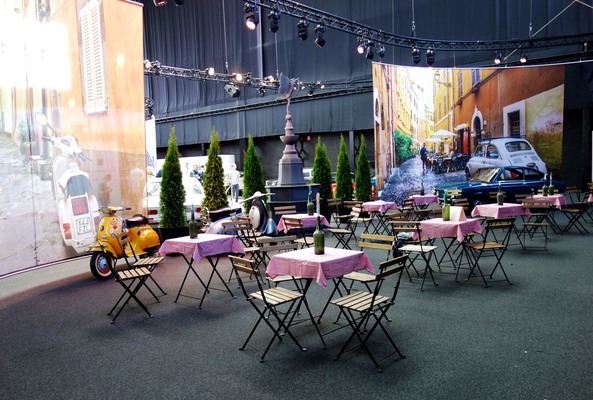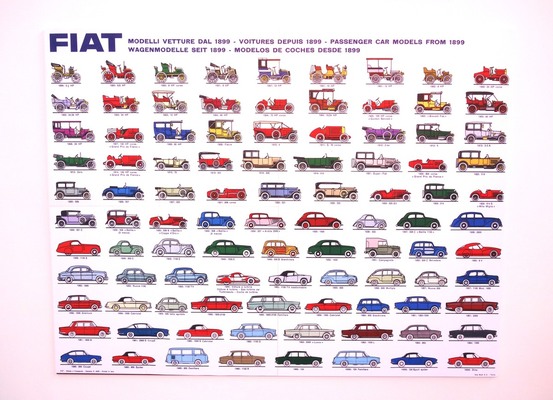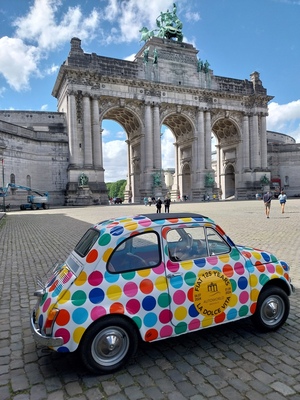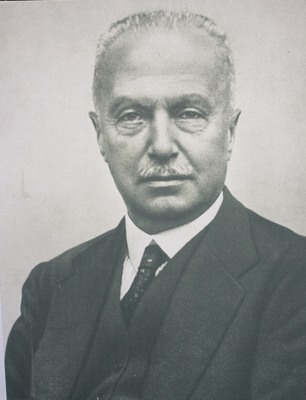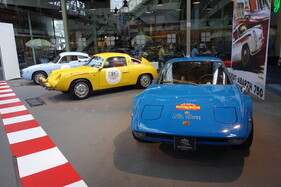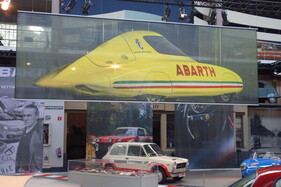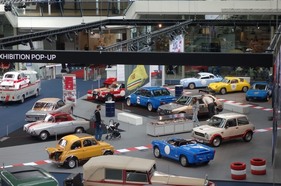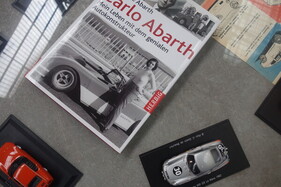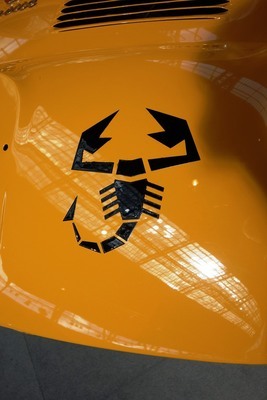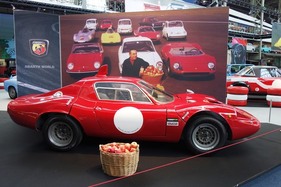This summer, Autoworld Brussels is presenting two exhibitions with Italian titles. The smaller of the two is dedicated to the 75th anniversary of the Abarth company. "Velocità" (speed) was certainly a passion of Carlo Abarth, whose name is spontaneously associated with motorsport successes, performance-enhancing exhaust systems and, last but not least, small, venomous sports cars that outperformed their larger rivals. Although there were also collaborations with other car manufacturers, the name Abarth is usually associated with Fiat.
Abarth 75(0)
Let's begin our tour of the small but high-caliber special exhibition on the subject of "75 years of Abarth", the brand with the scorpion. The cars on display are complemented by trilingual information boards (with texts in French, Dutch and English), showcases and relevant decorations. Right at the entrance, visitors are greeted by a replica of the Abarth OT 2000 "Periscopio", which owes its nickname to the characteristic air intake on the roof. The car is a further development of the OT 1300, which was extremely successful at the time. The accompanying decoration with a basket of apples quotes a photo of Carlo Abarth, which is shown in the background.
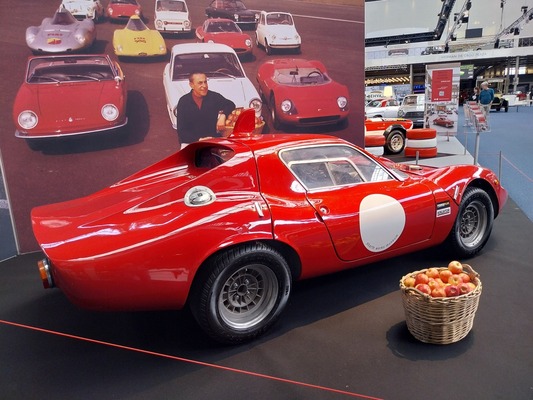
The early days of the Abarth company - the 1950s - are represented by four exhibits. Firstly, there is an example of the Fiat-Abarth 850 Sestrière, named after the venue of a winter rally. The body with its unmistakable rear end was designed by Zagato. Unlike the previous 750s, however, the Sestrière dispenses with the "double bubble" roof bulges and has a smooth roof. The car on show in Brussels is one of the few Abarths with right-hand drive.

The Fiat-Abarth 750 Record Monza from 1958 also has a smooth roof. It used to belong to the racing team of the son of former American President Roosevelt, which was very successful in the USA with Abarth vehicles. The Fiat-Abarth 750 Spider Allemano, whose aluminum body was designed by Giovanni Michelotti, also dates from the same year. The Fiat-Abarth 750 GT by Viotti, with which Abarth started its production of vehicles based on the Fiat 600, dates back to 1956 and has a completely different styling.
From SS to TC
The seventies are represented by five cars. The replica of the Autobianchi A112 Abarth prototype is on display. The "power dwarf" Fiat-Abarth 595 SS is also represented, as is a replica of the more powerful 695 SS. There is also a Fiat 124 Abarth Rally Group 4 from 1973, while the no-frills shape of the blue Abarth 1300 Scorpione SS still looks "fast" even after half a century. Also painted blue is the Fiat 131 Abarth from 1981, which is shown as a tribute to Walter Röhrl, who became world rally champion in a Fiat 131 Abarth in 1980.

The most recent exhibit is a Fiat Ritmo 130 TC Abarth from 1986. Finally, the Fiat 2300 S Coupé from 1968 should be mentioned, which was sold without the Austrian's name affix, but whose six-cylinder engine was upgraded by Abarth to make it stand out more from the saloons.
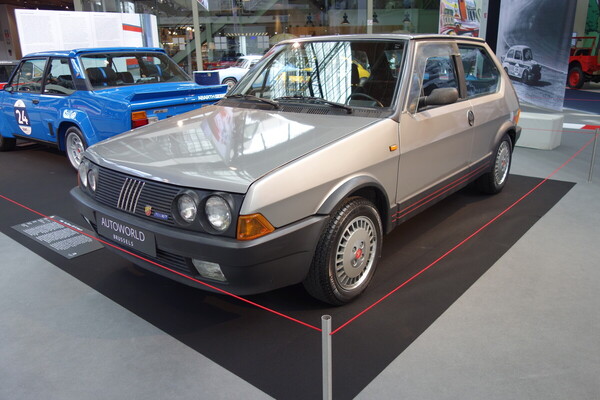
The special exhibition mainly covers only that part of the brand's 75-year history before Carlo Abarth sold his company and the brand rights to Fiat. However, this prioritization of the exhibition is convincing, even if one would perhaps have liked to see a Fiat-Abarth 1000 TC. If you take a closer look at the exhibits, you will discover that most of them come from the Belgian "Abarth Works Museum", which will reopen in spring 2025. So it will be interesting to see what surprises await visitors there.
From 3.5 to zero
Now let's move on to the "125 Years of Fiat" exhibition, which is almost three times the size and which Autoworld has given the title "La dolce vita" - or rather, decorated it. On the upper level of the museum, the so-called "Herman De Croo Plaza", the exhibition organizers have indeed created an atmosphere that is reminiscent of the Italian lifestyle. The lovingly detailed decoration contains expressive and atmospheric photos, advertising signs and contemporary posters. There is also a timeline of the company's history.
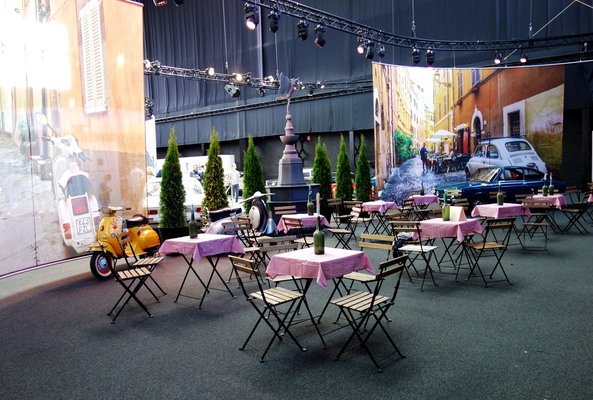
On an Italian-style "marketplace" as a backdrop, you can watch films about Fiat cars while subtle Italian music plays in the background. The cars on display can be reached via cobblestone paths, which on closer inspection turn out to be carpeted. Cars from the period from 1899 to the turn of the millennium are on display; the focus is on vehicles from the post-war era.
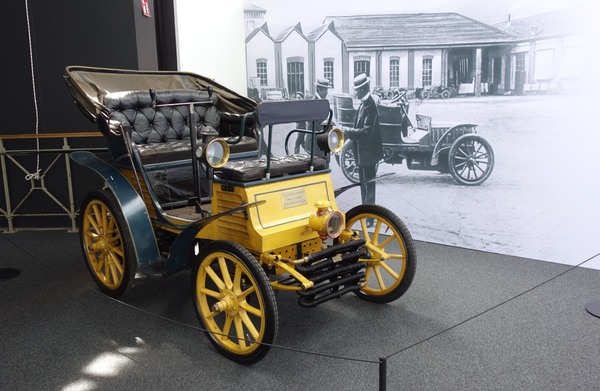
The exhibition starts with the Fiat 3.5 HP from 1899, on loan from the National Automobile Museum in Turin. At the time, 30 examples of this car were produced. Then the Fiat Zero 12-15 HP from 1913 is shown, of which no less than 1300 were built. One year later, the Fiat S 57/14 B racing car was built, which could reach a top speed of 145 km/h. After the First World War and after Fiat put the huge Lingotto production plant into operation in 1922, the Fiat 501 S was also produced there. The example on display is somewhat younger and "only" 100 years old.

The neighboring Fiat 508 B Balilla from 1933 is a special version for the Belgian market with wire wheels. This example is in its unrestored original condition and was only put back into operation last year after being out of service for 40 years. Of course, the first Fiat 500, known as the "Topolino", should not be missing from this exhibition. On display here is a pre-war example from 1936, complemented by the small Fiat 500 Giardiniera estate car from 1966, which can be seen one floor below, packaged like a toy. A "normal" Fiat 500 decorated with colorful dots has already greeted visitors on the square in front of the museum entrance.
The little luxuries of the post-war era
Undoubtedly impressive is the aerodynamically styled Fiat 1100 S coupé from 1948, of which exactly 401 were built and which was successfully entered in the Mille Miglia in 1947 and 1948. The exhibition then shows the first post-war design of the "Italian Automobile Factory Turin", namely the Fiat 1400 B with its characteristic fog lamp in the center of the radiator grille. Directly related to this car is the luxurious 1900 B Granluce coupé, also from 1958. The body of this tasteful car is based somewhat on contemporary American styling.

Less glamorous and intended more for everyday use was the volume model Fiat 1100 TV. The highlight of the exhibition is undoubtedly the Fiat 8V with Rapi bodywork from 1954. 104 examples of this coupé with its eponymous V8 engine were built for homologation reasons and were also used successfully in motor racing. Various workshops fitted the car with bodywork. The "Otto Vù" on display at Autoworld was bodied by Luigi Rapi. Right next to it is a much more practical car: the now rare Fiat 2300 Familiare estate car with a consistent trapezoidal shape from the 1960s.
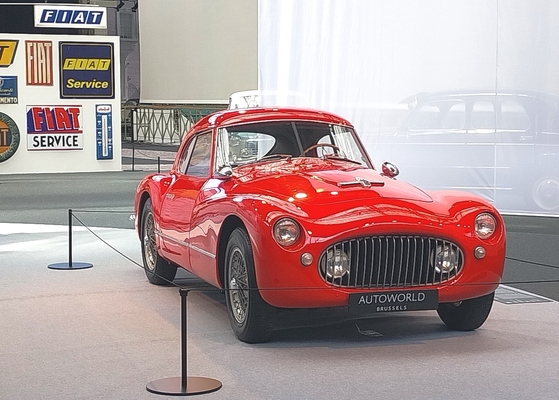
Post-war motorization was not only decisively shaped in Italy by the Fiat 600, an early example of which is shown in front of a colourful backdrop. Its 1956 derivative Multipla, a forerunner of today's "minivans", is also presented in a remarkable setting. It stands in front of a large picture of the factory in Lingotto. It shows the famous circuit on the roof of the building, which unfortunately no longer exists today, on which the finished vehicles were once driven for testing - including a view of the mountains. The mid-range Fiat 1500 with its design based on the Chevrolet Corvair is no longer seen very often these days.
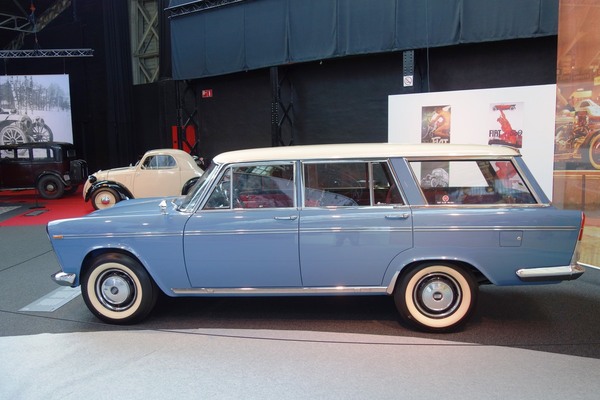
Fiat cars have always been a popular basis for special bodies, some of which are on display in Brussels. For example, the "Shellette" beach car by Giovanni Michelotti, which can also be seen in a similar form as the royal "DAF Kini" in the Dutch DAF Museum. Two designs from Vignale are on display: A 1300 Coupé from 1963 and the "Eveline" Coupé from 1969, based on the Fiat 124. The standard Fiat 124 Sport Coupé from 1967 is just a few meters away.
Sport and Spider
The Fiat 850 Sport Coupé, one year younger, is one size smaller, while the large Fiat 130 Coupé designed by Pininfarina once marked the upper end of the model range. Let's move on to the open-top sports cars, usually called "Spiders" at Fiat. There is the pretty 850 Spider Vignale from 1968, which was parked in the brasserie at the time of our visit. Also on display are the Pininfarina Spider Europa, the Fiat 1500 Spider and, last but not least, the Fiat Dino Spider. This series also includes the Bertone X 1/9 from 1983, whose massive "American" bumpers take some getting used to.
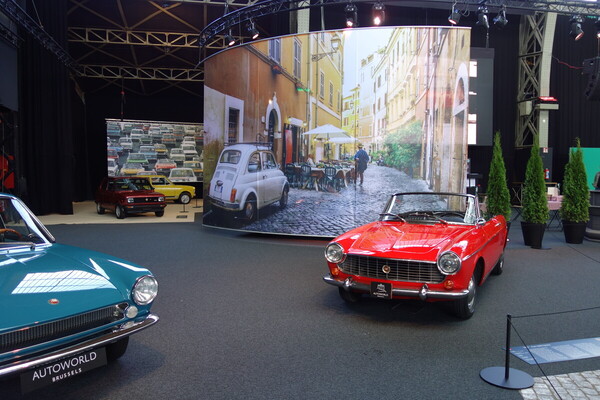
Finally, a Fiat 128 Rally from 1971, an example of the ten years younger Fiat 127 Sport and the four-wheel drive version of the successful "great box", a rare Fiat Panda 4 x 4 Trekking from 1999, await the visitor.

More recent Fiat models, such as the (second) Multipla, are mentioned with a picture, but are not on display. However, this is not absolutely necessary, as visitors are given a good overview of Fiat's diverse car production and should have gained sufficient impressions - especially if the vehicles in the parallel Abarth exhibition are also included. The exhibition thus provides a good insight into Fiat's long company history, "dolce vita" included.

During his visits to Brussels, the author is always surprised at what else can be discovered "en passant" at Autoworld. For example, representative vehicles of the Belgian royal family are currently on display. Furthermore, by rearranging the exhibits, a small show of the almost forgotten Belgian car brands (FN, Minerva), whose history ended with the Imperia company, has been created in passing. But that's another topic. Both exhibitions will run until September 1, 2024.
w ww.auto world.be

